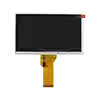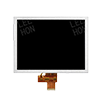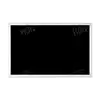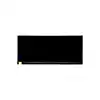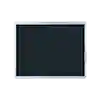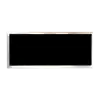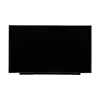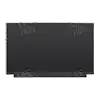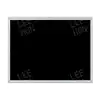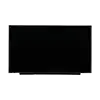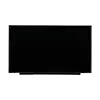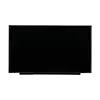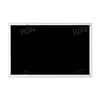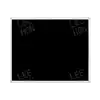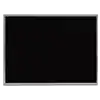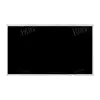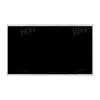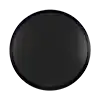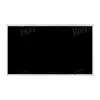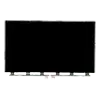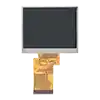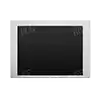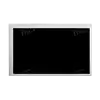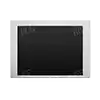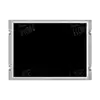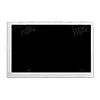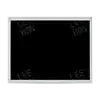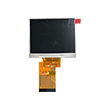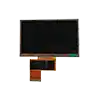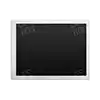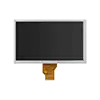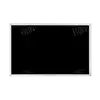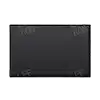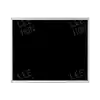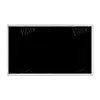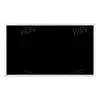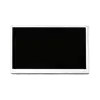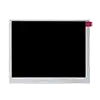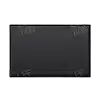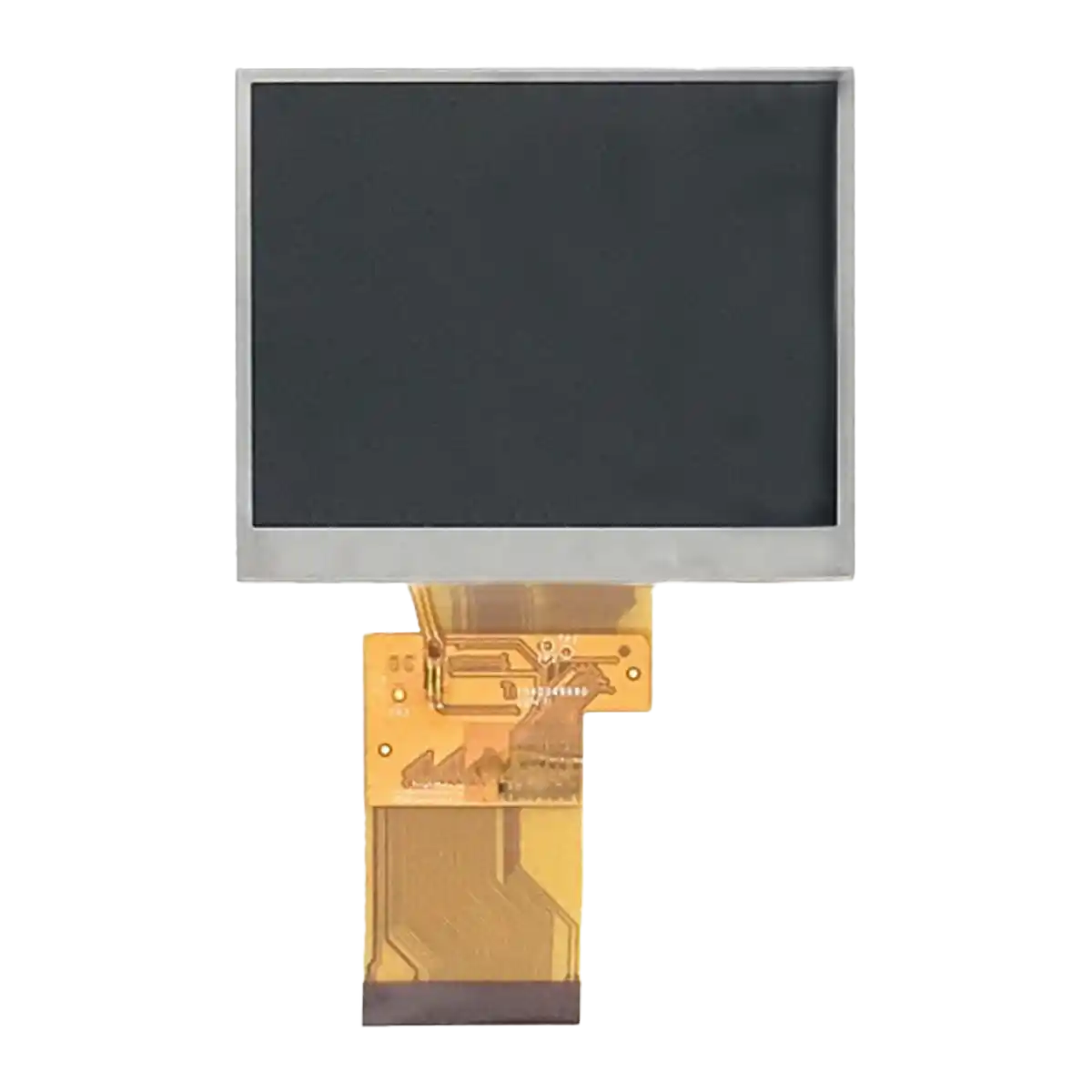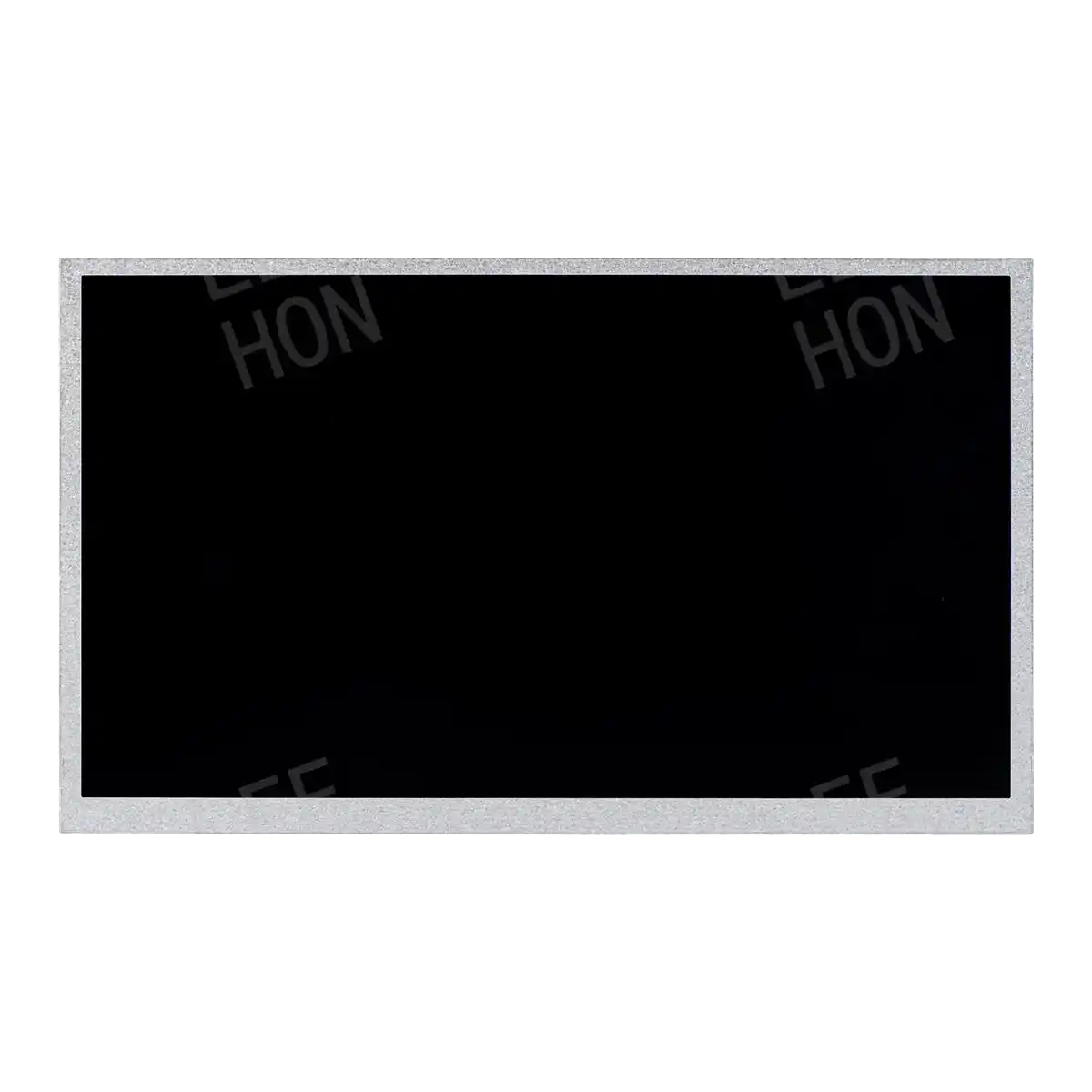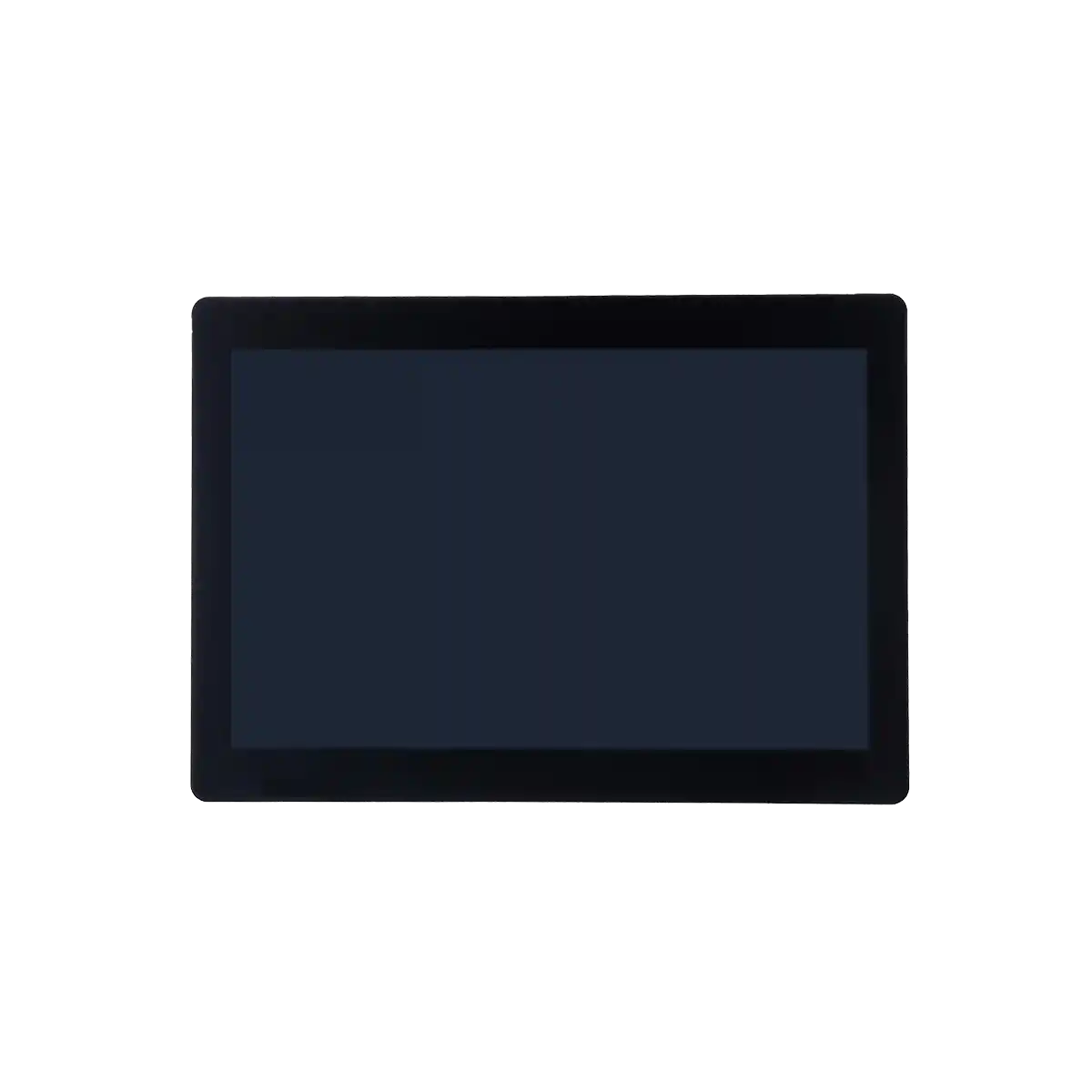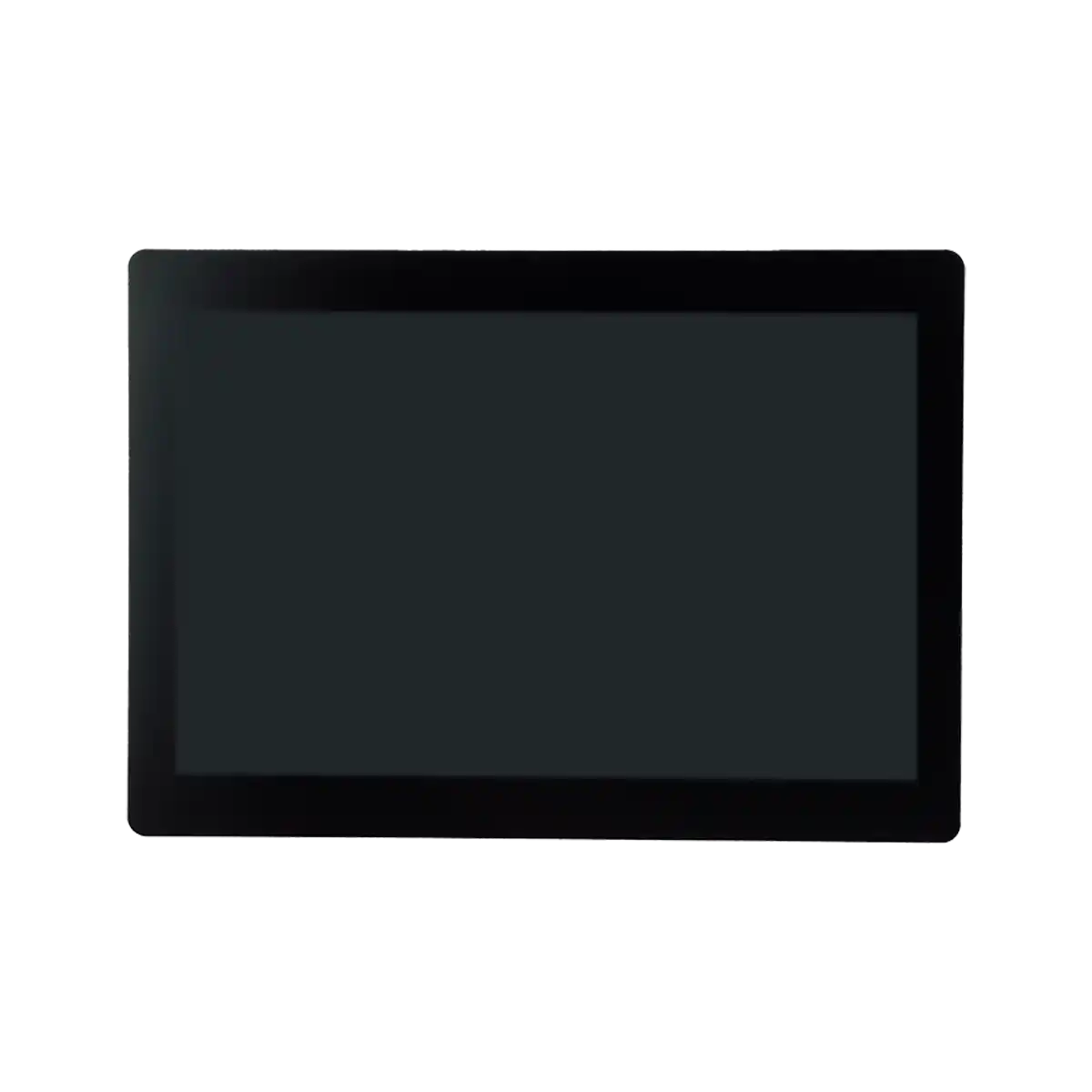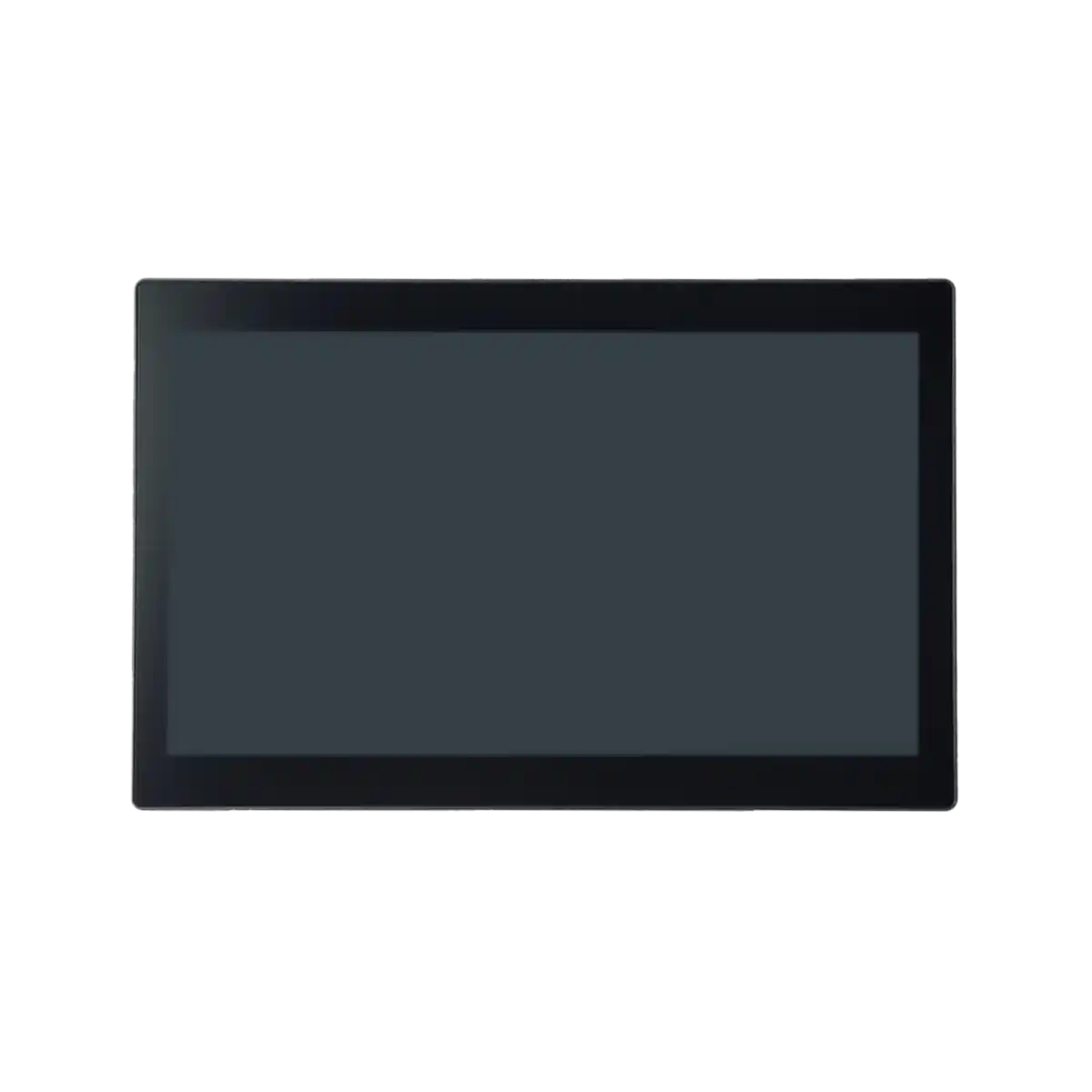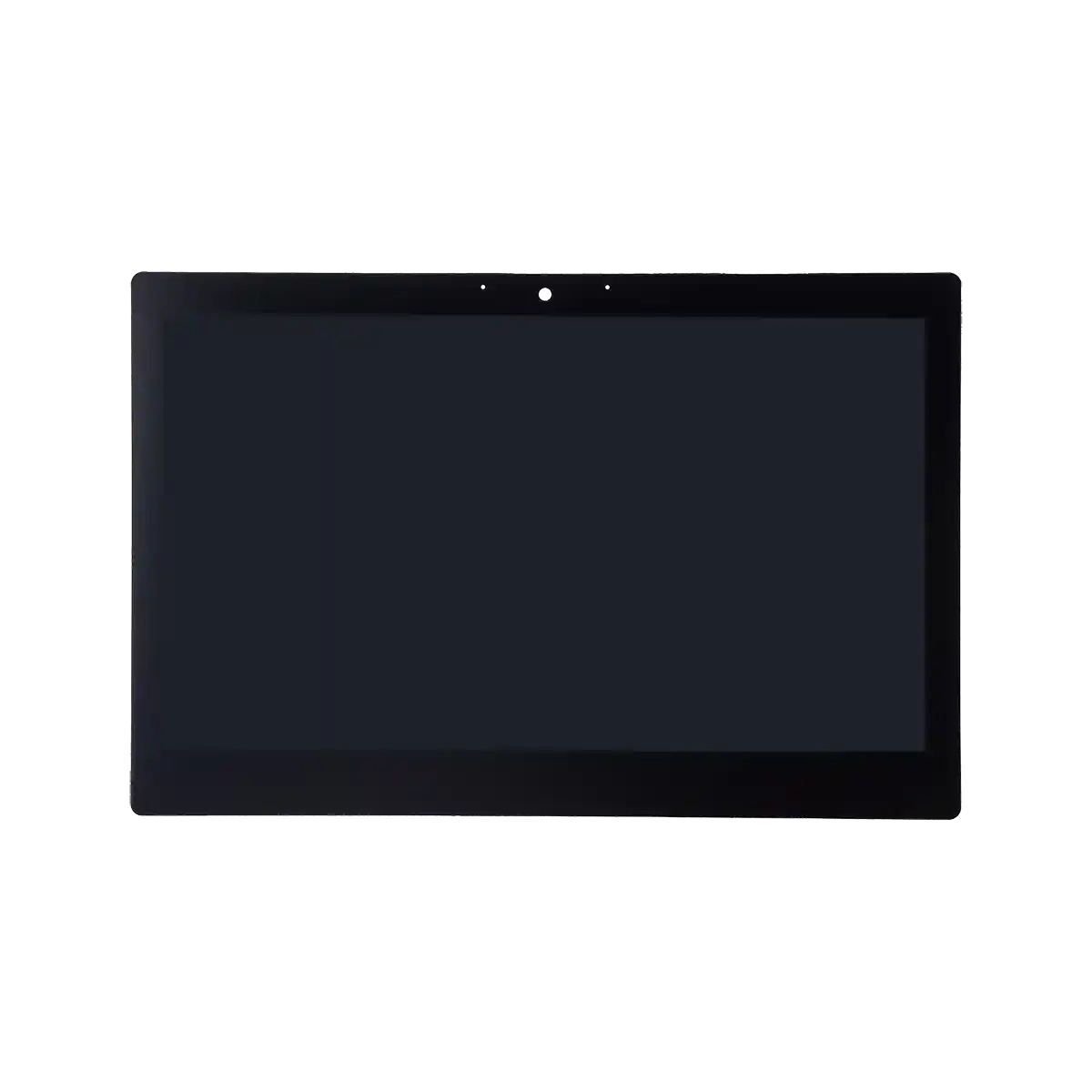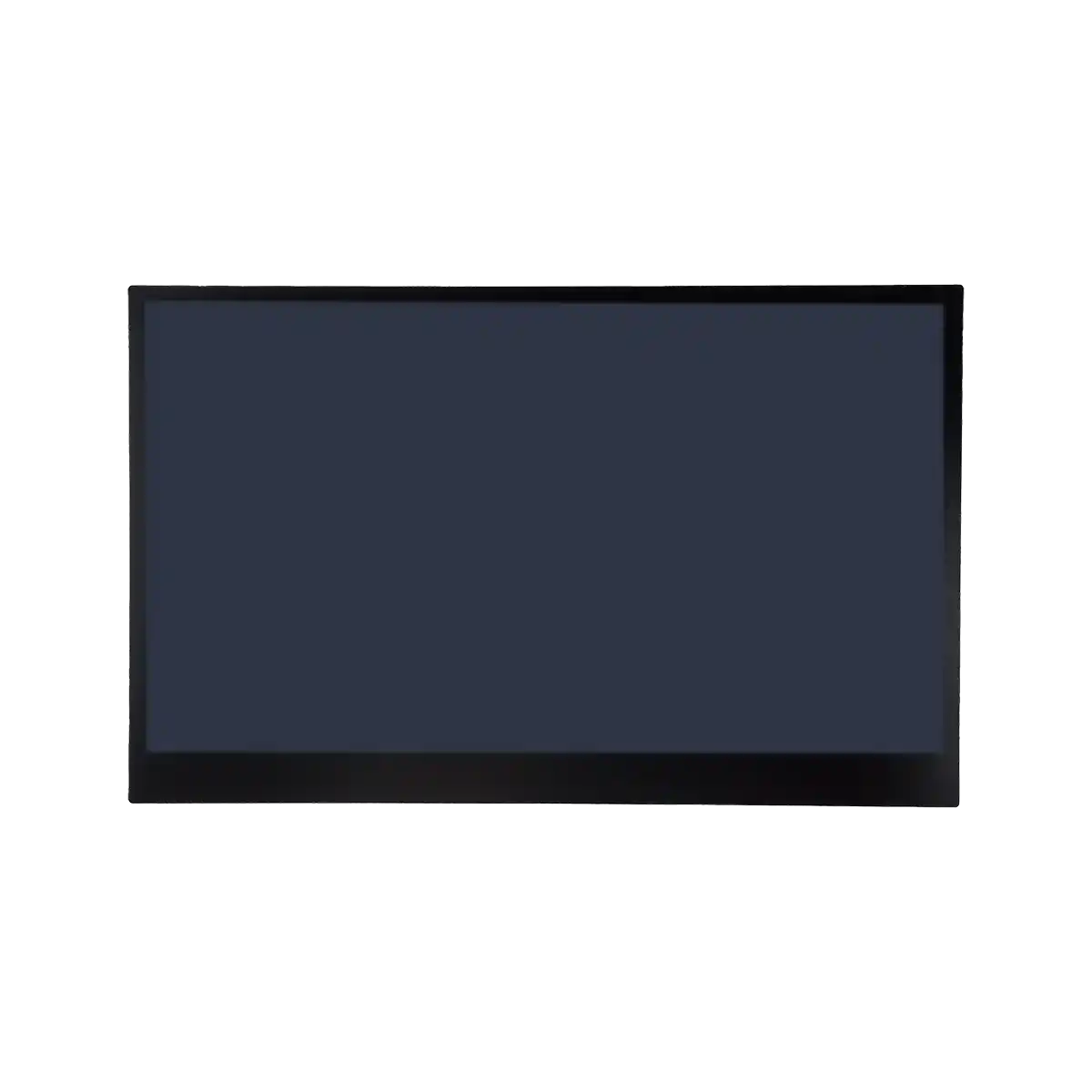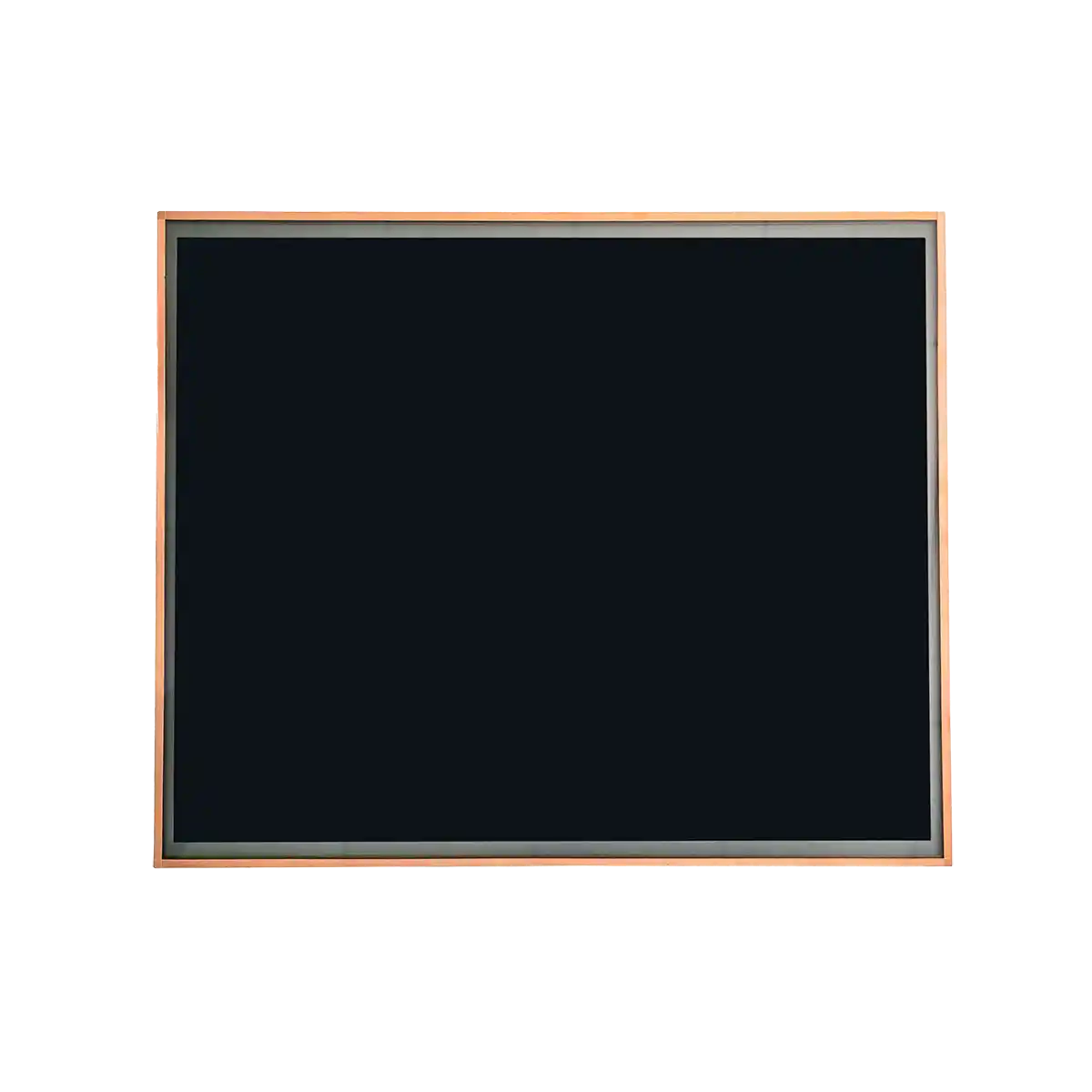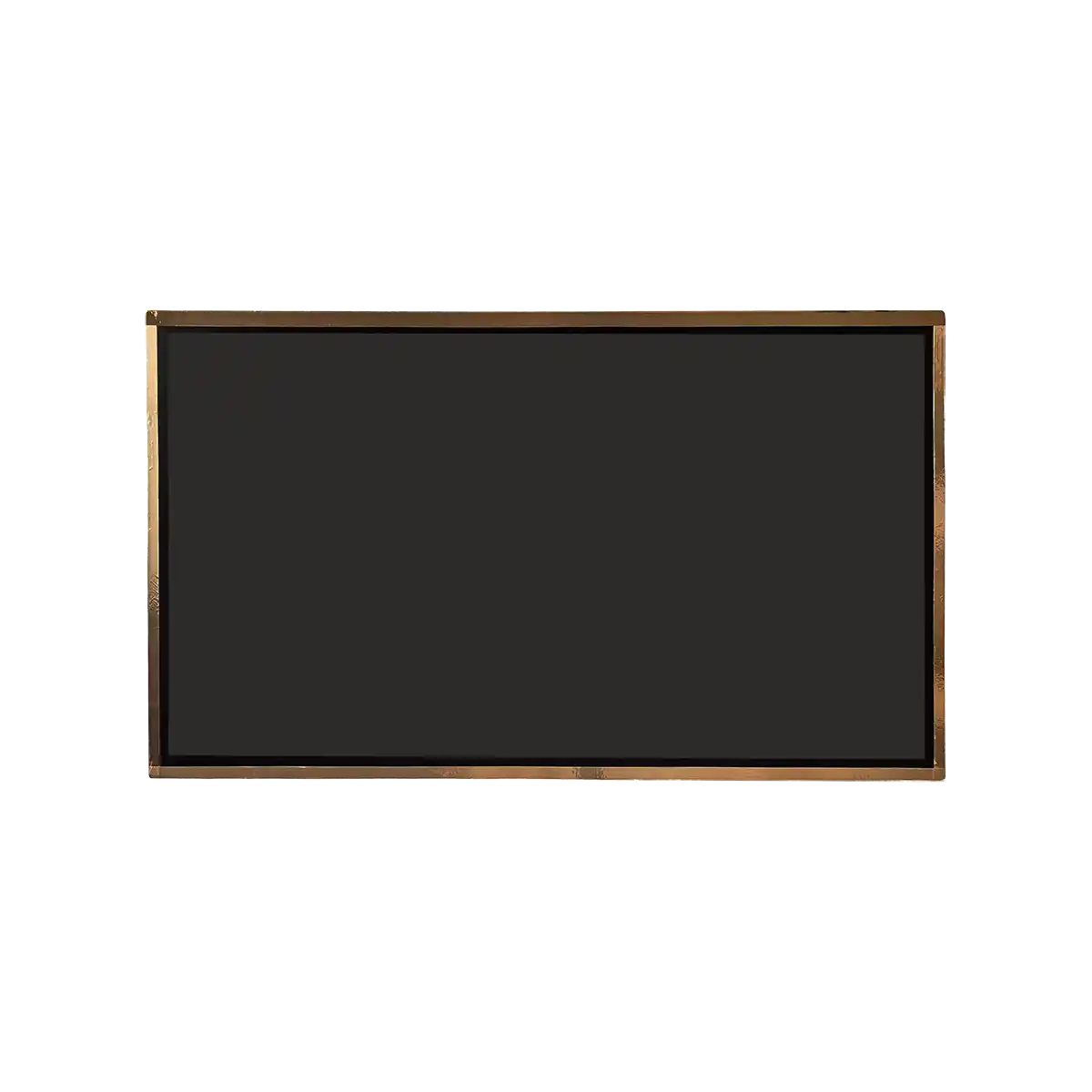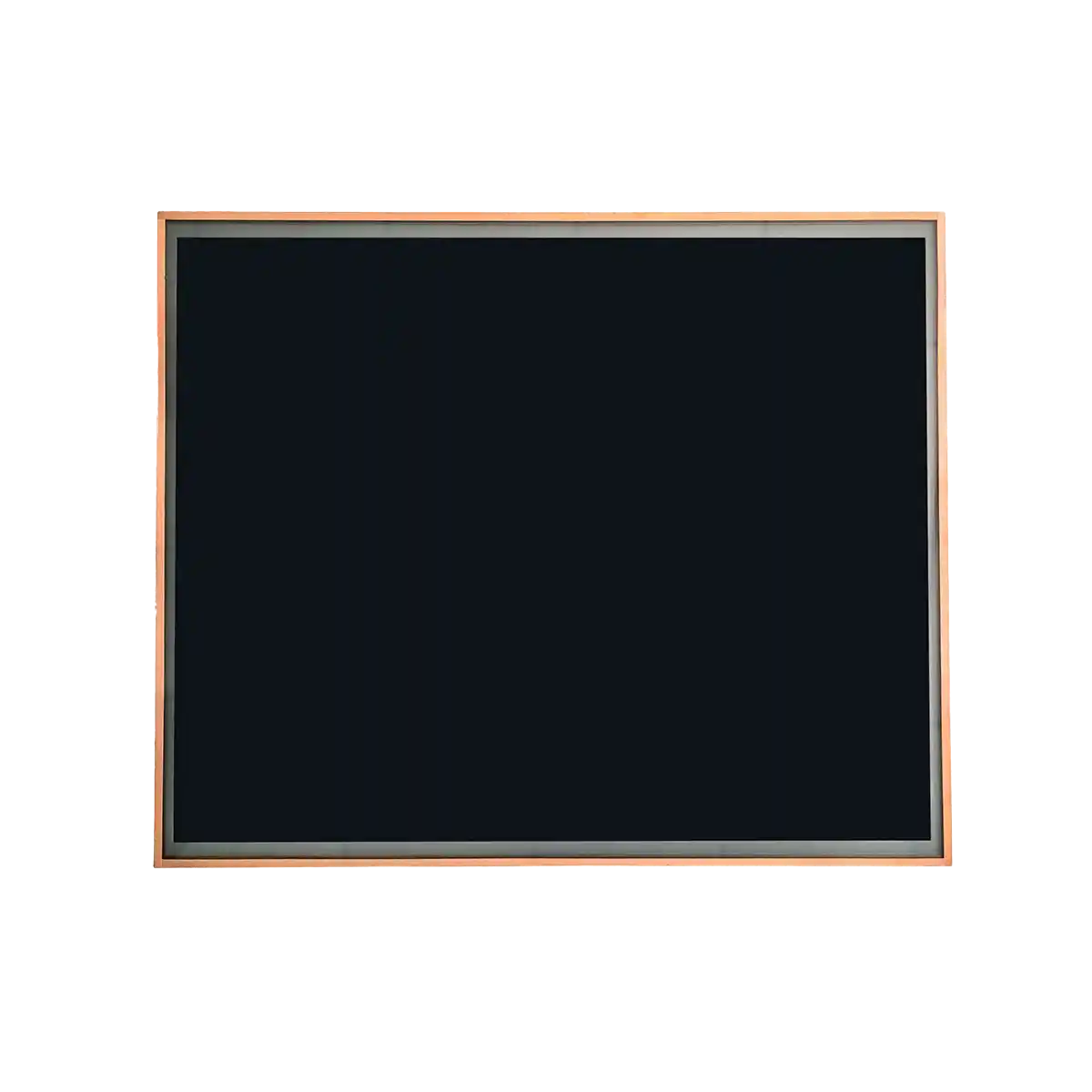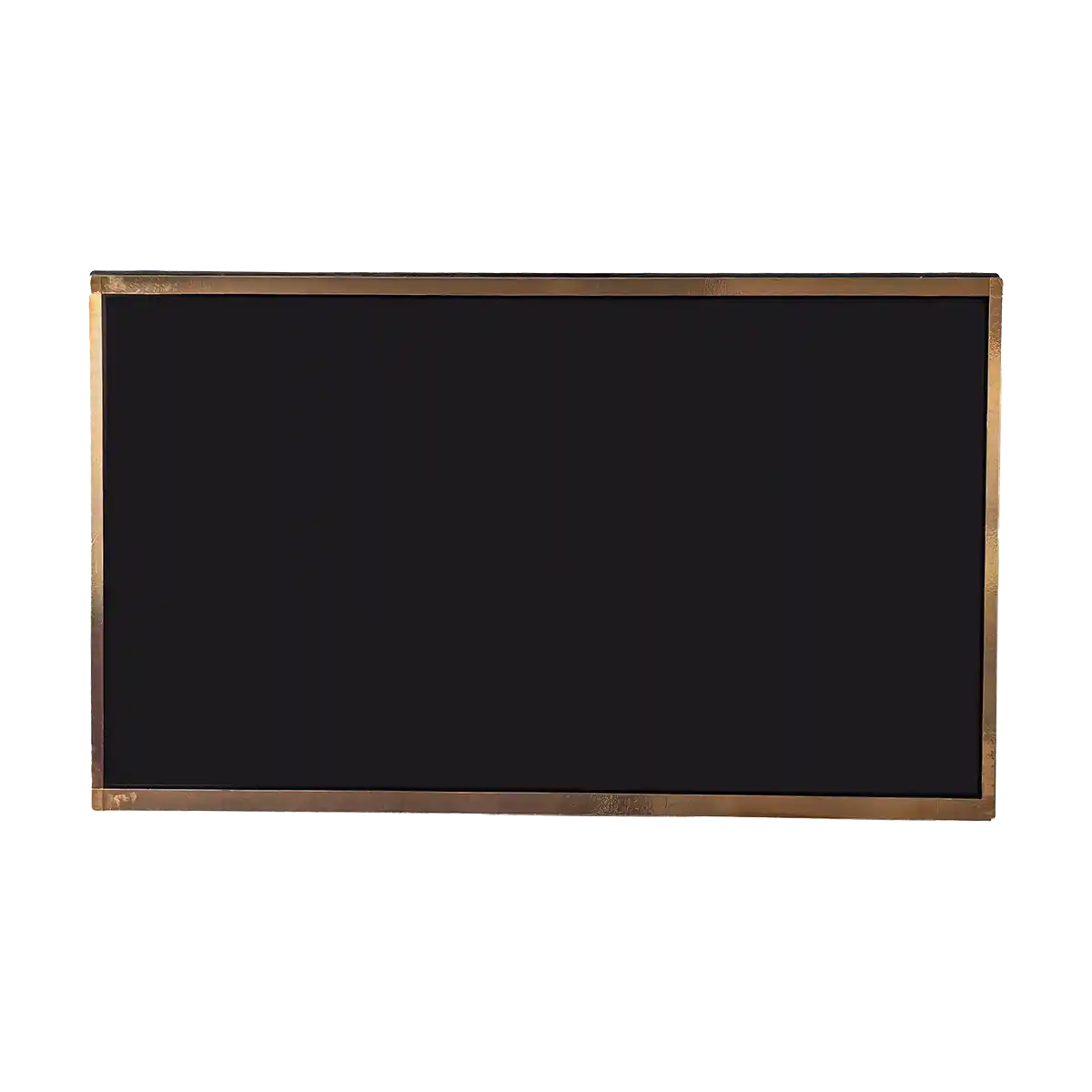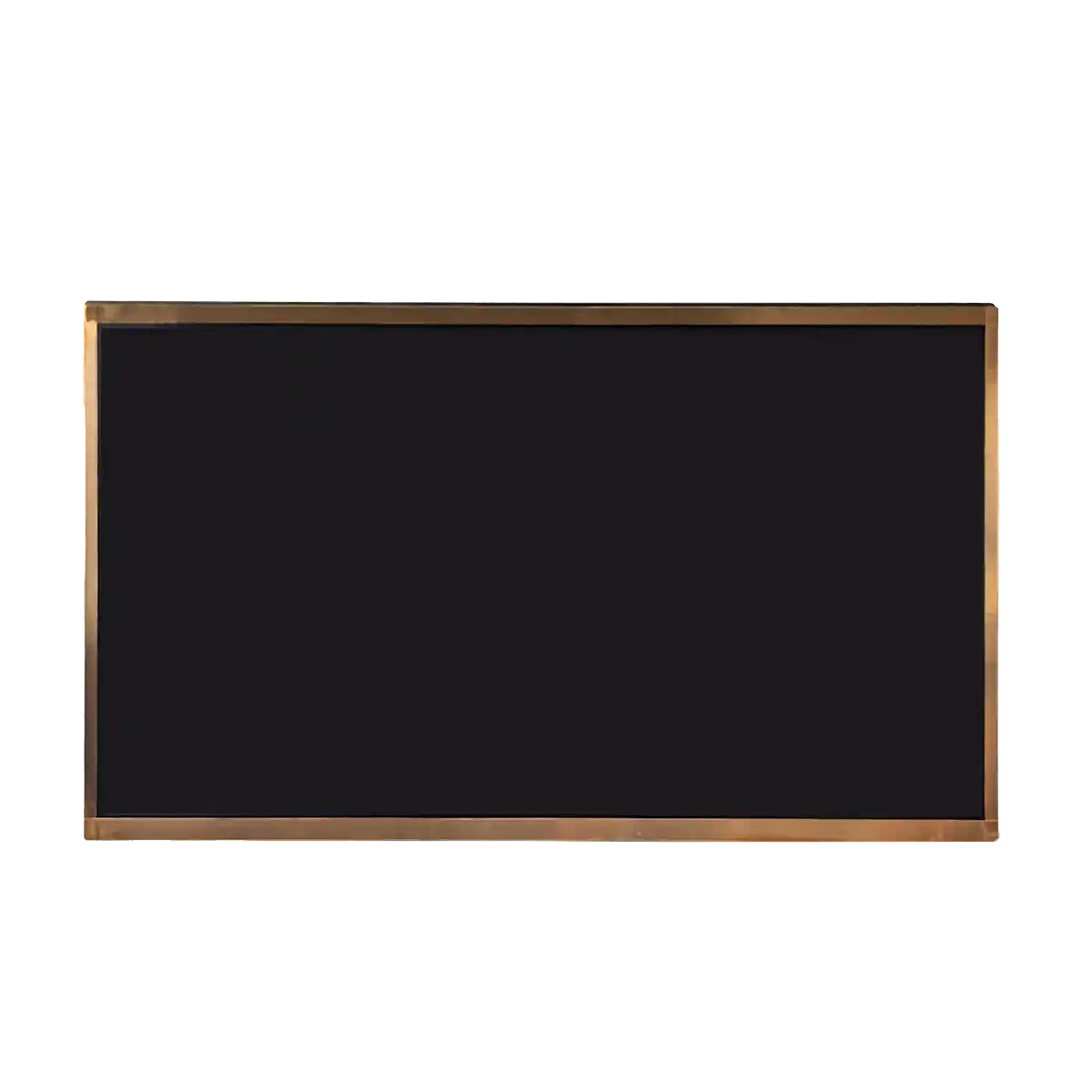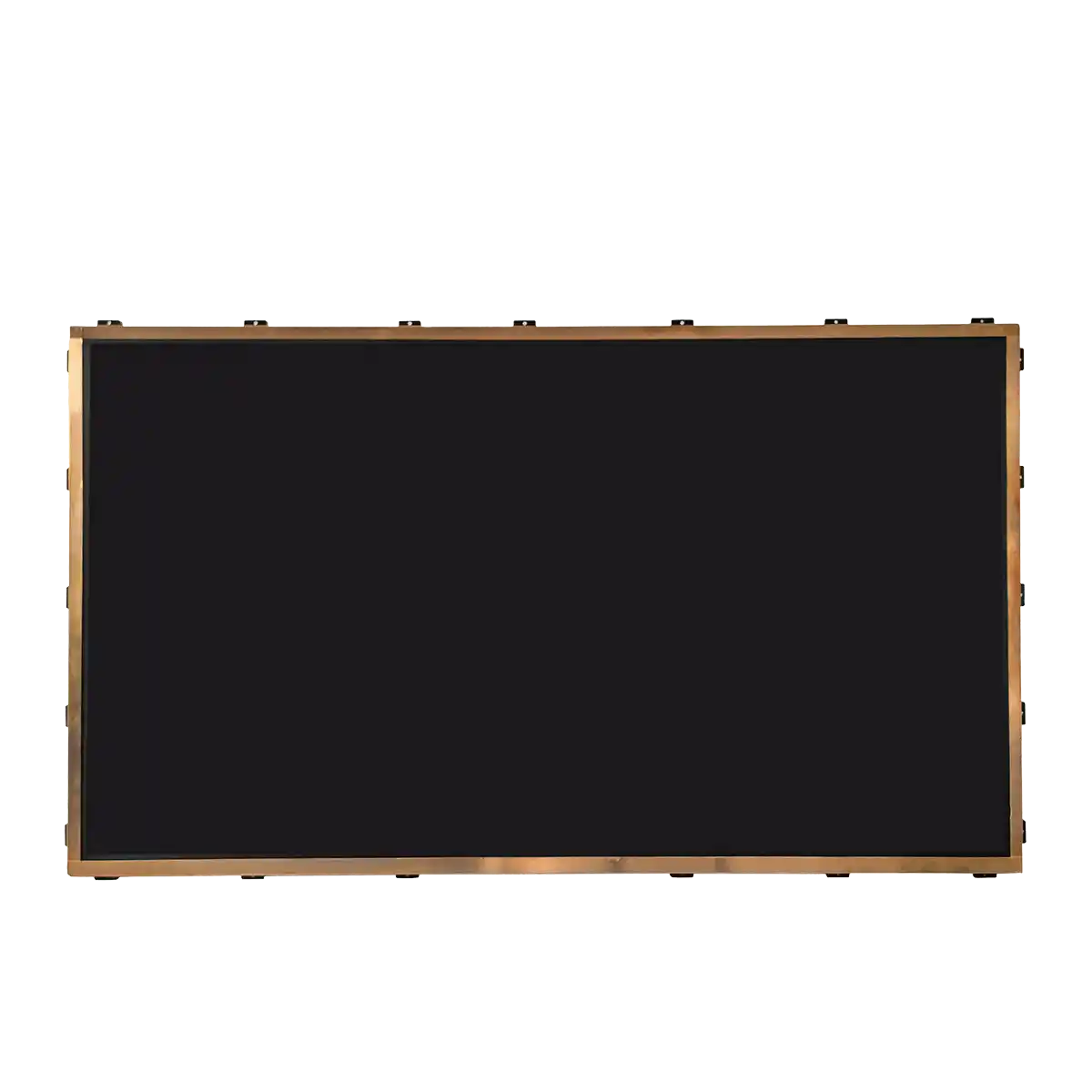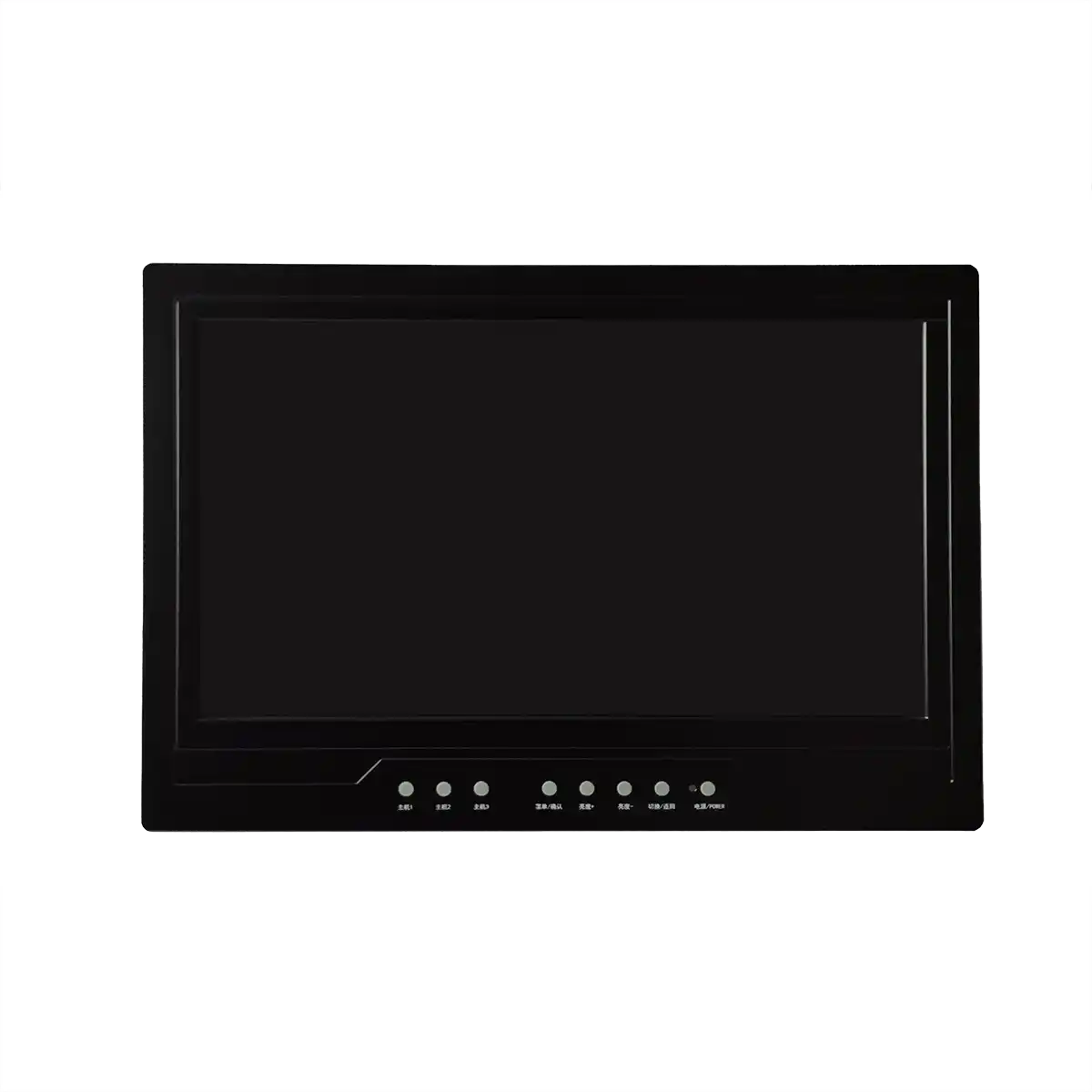Comprehensive Analysis of Industrial LCD Screens in Transportation Equipment
- Introduction:
Industrial Liquid Crystal Display (LCD) screens have become increasingly integral to the functionality and user experience within modern transportation systems.

Their ability to present clear, high-resolution visual information to both operators and passengers has led to their widespread adoption across diverse modes of transport 1.
Unlike their consumer-grade counterparts, industrial LCDs deployed in transportation face exceptionally demanding operational environments and must adhere to stringent performance and safety requirements.
These displays are subjected to extremes of temperature, varying humidity levels, constant vibration, potential shocks, and often, intense sunlight exposure.
Consequently, their design, materials, and certifications differ significantly to ensure reliability and longevity in these challenging conditions. This report aims to provide a comprehensive analysis of the key characteristics of industrial LCD screens utilized in various transportation equipment, encompassing their specific applications, the environmental conditions they are engineered to withstand, the durability standards and certifications they must meet, the critical factors influencing display visibility, typical lifespan and reliability expectations, power consumption considerations, common technological features, and the relevant safety regulations applicable in specific geographical contexts, including Marseille and Europe.
- Applications of Industrial LCD Screens in Transportation Equipment:
- 2.1 Automotive:
Industrial LCD screens have revolutionized the automotive industry, moving beyond basic indicators to become central to vehicle operation and occupant experience.
In modern vehicles, instrument clusters increasingly utilize LCDs to present essential driving information such as speed, fuel levels, engine diagnostics, and navigation guidance through customizable, high-resolution graphical interfaces 1.
This transition from traditional analog gauges to digital displays offers manufacturers greater flexibility in how information is conveyed to the driver, enhancing situational awareness and overall driver engagement 4.
Early applications were limited to monochromatic displays for simple functions like clocks and odometers 2.
However, advancements in LCD technology in the 2000s introduced color screens capable of displaying maps and vehicle diagnostics 2. Today, Thin-Film Transistor (TFT) LCDs are the mainstream choice for instrument clusters, providing vibrant colors and wide viewing angles 1.
Infotainment systems represent another significant application, employing industrial LCDs with touch-enabled interfaces to provide multimedia capabilities, connectivity options, and control over various vehicle functions, including audio, navigation, smartphone integration, and vehicle settings 1.
These systems offer a seamless and interactive multimedia experience for both drivers and passengers, mirroring the user interfaces found in consumer electronics and enhancing the overall driving experience 4. The integration of touchscreens with LCDs has streamlined access to vehicle controls, replacing physical buttons and knobs with intuitive digital interfaces 2.
Industrial LCDs also play a crucial role in Advanced Driver Assistance Systems (ADAS) by displaying real-time data from sensors, cameras, and radar systems. This visual feedback aids in collision avoidance, lane keeping, parking assistance, and adaptive cruise control, enhancing driver awareness and safety 4.
High-resolution LCDs are essential for clearly presenting this information, providing alerts and warnings about potential hazards on the road 4.
For passenger comfort, rear-seat entertainment systems utilize LCD screens to offer multimedia options, connectivity features, and personalized settings, making long journeys more enjoyable 4.
Furthermore, head-up displays (HUDs) integrate LCD technology to project essential driving information, such as speed and navigation cues, onto the windshield, allowing drivers to access critical data without diverting their gaze from the road 3.
This significantly improves safety by minimizing distraction. Finally, some modern vehicles are incorporating camera monitoring systems that use LCD screens to replace traditional side mirrors, offering a wider field of view, reducing blind spots, and enhancing safety during lane changes and parking 4.
- 2.2 Aviation:
The aviation industry relies heavily on industrial LCD screens for critical operational and informational purposes.
In the cockpit, cockpit displays, including Primary Flight Displays (PFDs) and Navigation Displays (NDs), present vital flight parameters such as airspeed, altitude, heading, and navigation waypoints, as well as engine status 1.
Compared to traditional analog instruments, LCDs offer greater clarity, flexibility in layout configuration, and enhanced reliability, contributing to improved pilot situational awareness 5.
These displays often integrate navigation charts, weather data, traffic information, and aircraft performance parameters into multifunction displays (MFDs), streamlining cockpit operations and reducing pilot workload by providing comprehensive information in real-time 5.
In-flight entertainment screens utilize LCD technology to provide passengers with a wide range of entertainment options, enhancing their travel experience 1. Passenger information systems onboard aircraft use LCDs to display flight details, gate information, and other relevant data, facilitating smooth and efficient travel for passengers 1.
Similar to automotive applications, head-up displays (HUDs) in aviation project essential flight information onto a transparent screen in the pilot's line of sight, improving flight safety and efficiency by allowing pilots to maintain focus on flying while accessing critical data 5.
Air traffic control systems employ large industrial LCD splicing screens to provide controllers with real-time flight information, radar data, and weather updates, enabling them to manage air traffic effectively 1. Finally, flight simulators utilize high-resolution LCD displays to create realistic training environments for pilots 1.
- 2.3 Maritime:
Industrial LCD screens are indispensable in the maritime sector for navigation, communication, safety, and operational efficiency.
Navigation systems such as GPS chartplotters and radar displays rely on high-resolution LCDs to provide clear and detailed navigational charts, maps, and radar images, crucial for safe navigation in various weather conditions 1.
Multifunctional Displays (MFDs) on ships integrate diverse information, including navigation, sonar, weather, and vessel data, onto a single LCD, often with touch-screen capabilities for intuitive control, enhancing situational awareness for sailors and operators 9.
Engine monitoring and control panels utilize LCDs to display critical engine parameters such as temperature, RPM, and fuel levels, enabling real-time monitoring for efficient operation and preventative maintenance 9.
Communication systems on ships, including VHF radios and satellite communication, incorporate LCDs to provide a clear interface for monitoring channels and messages 9.
Safety and surveillance systems use LCDs to display real-time video feeds from CCTV cameras monitoring various areas of the vessel, enhancing overall safety and security 9.
Weather monitoring and instruments employ LCDs to present weather data, forecasts, and alerts, aiding sailors in making informed decisions for safe navigation 9.
Even entertainment systems onboard integrate LCDs to provide high-quality displays for TVs and movie screens, contributing to crew and passenger comfort 9.
Central to ship operation, bridge control systems utilize LCDs to display critical information for navigation, communication, and overall vessel management, often offering customizable displays for operators to prioritize relevant data 9.
- 2.4 Railway:
The railway industry increasingly utilizes industrial LCD screens to enhance both passenger experience and operational efficiency. Passenger information systems at railway stations and onboard trains display real-time schedules, route maps, and emergency notifications, providing commuters with accurate and timely travel information 1.
Driver cab displays provide train operators with visualized data on train conditions, real-time data acquisition, and intuitive touchscreen controls, simplifying complex operations and enhancing safety 13.
Onboard control panels integrate LCDs for monitoring and controlling various train systems 1.
Signaling and track monitoring systems utilize LCDs to provide visual feedback on train positions, track conditions, and potential hazards, contributing to safe railway operations 1. In public-facing areas, ticket vending machines and fare collection systems employ ruggedized industrial LCDs to provide clear and interactive interfaces for users 16. These displays are designed to withstand the daily use by a large number of travelers.
- 2.5 Other Transportation Modes:
Beyond the primary modes, industrial LCD screens find applications in various other transportation sectors. In public transportation like buses, subways, and trams, they serve as information systems and digital signage at stops and within vehicles 1.
For commercial fleets and logistics, LCDs are integrated into onboard telematics and tracking systems, as well as in warehouse management systems 1.
Air traffic control systems rely on LCDs to display real-time flight information 1. They are also used in railway signaling and track monitoring, marine navigation and fish finders, for in-vehicle surveillance in various transportation vehicles, and in flight simulators for training purposes 1. Additionally, ticket validators in public transportation utilize industrial LCDs for fare collection 16.
- Environmental Conditions and Requirements:
- 3.1 Automotive:
Industrial LCD screens in automotive applications must endure a wide range of harsh environmental conditions to ensure reliable performance and longevity. Temperature range is a critical factor, as these displays can be exposed to extreme temperatures ranging from -30°C to 85°C or even higher due to direct sunlight in summer and freezing conditions in winter 17.
To cope with this, specialized materials like high-temperature resistant liquid crystal materials are used, along with innovative heat dissipation structures to prevent performance degradation or permanent damage 23.
Humidity levels also pose a challenge, with displays encountering varying levels of moisture and the potential for condensation 24. To mitigate this, manufacturers employ full lamination processes and seal frames with materials like silicone gel to block water vapor and prevent corrosion 23.
Vibration and shock are constant in automotive environments due to vehicle operation and road conditions 17. Robust construction, including reinforced mounts and shock absorption architectures such as embedded rubber pads, are essential to ensure stable and continuous operation 23.
Dust exposure is another concern, particularly in certain driving environments 24. Dustproof front panels with IP65 or higher ratings and sealed enclosures are often implemented to prevent dust and dirt from affecting the display's performance 17. Finally, sunlight exposure can lead to glare, increased internal temperatures, and UV degradation 1.
High brightness levels, often exceeding 800 Lux, and anti-glare coatings are crucial for maintaining visibility under bright sunlight 21.
- 3.2 Aviation:
Industrial LCD screens in aviation face a unique set of environmental challenges.
They must operate across a wide temperature range, typically from -30°C to +80°C or more, to ensure consistent performance during all phases of flight, from ground operations to high altitudes 1.
This often involves using temperature-resistant materials and advanced thermal management systems 20. Aircraft also experience variations in humidity levels, with the potential for condensation at different altitudes 5.
Aviation LCDs often feature sealed enclosures to prevent moisture ingress and condensation, which can also help manage thermal issues related to air density at high altitudes 5.
Vibration and shock are significant factors, with displays needing to withstand vibration during flight and potential shocks during landing or turbulence 1.
Lightweight yet durable designs and component potting are crucial for mitigating these effects 5. Operation at varying barometric pressure, including potential rapid decompression, is another consideration 5. LCD technology is inherently suitable for high altitudes as it is not significantly affected by air pressure 5.
Sunlight exposure in the cockpit can be intense, necessitating the use of anti-glare and anti-reflective coatings to ensure readability 5.
- 3.3 Maritime:
Marine environments present particularly harsh conditions for industrial LCD screens. A wide temperature range is required to handle the diverse climates encountered at sea 10. Marine-grade displays are often specified to operate from -30°C to +85°C 25. High humidity levels, constant exposure to salt spray, and the risk of temporary immersion in water are significant challenges 10.
Waterproofing with high Ingress Protection (IP) ratings (e.g., IP65, IP66, IP67) and the use of corrosion-resistant materials are essential 10. Marine LCDs must also withstand significant vibration and shock from ship engines and rough seas 1, often requiring ruggedized frames and robust materials 10.
Exposure to dust and other contaminants, especially in port environments, necessitates sealed enclosures 10. Finally, intense sunlight exposure on the open sea demands high brightness levels (1000 nits or higher) and effective anti-glare coatings for optimal visibility 1. Optical bonding is frequently used to enhance contrast and reduce reflections in these conditions 10.
- 3.4 Railway:
Industrial LCD screens in railway applications must be resilient to a range of environmental stressors. They need to operate reliably across a wide temperature range, typically from -25°C to +70°C, with some applications requiring -40°C to +85°C 14.
Protection against varying humidity levels is also important, and conformal coatings are often used to safeguard against moisture 36. Railway environments are characterized by significant vibration and shock from train movement 1, necessitating robust designs that comply with standards like EN 61373 14. High dust exposure, including brake dust, is common, requiring LCDs with IP65 or higher ratings 12. For displays at stations and in driver cabs, sunlight readability is crucial, often requiring high-brightness panels (1000 nits or more) 1.
- 3.5 Environmental Condition Requirements by Transportation Mode:
| Environmental Condition | Automotive | Aviation | Maritime | Railway |
|---|---|---|---|---|
| Temperature Range | -30°C to 85°C+ | -30°C to 80°C+ | Wide range, -30°C to 85°C often specified | -25°C to 70°C+, -40°C to 85°C in some cases |
| Humidity Levels | Varying, condensation possible | Varying, condensation possible, low pressure | High humidity, salt spray, immersion risk | Varying, conformal coating often used |
| Vibration and Shock | Constant vibration, significant shocks | Vibration during flight, landing shocks | Constant vibration, shocks from waves | Constant vibration, shocks |
| Dust Exposure | High | Moderate | High (ports), salt crystals | Very High (dust, brake dust) |
| Sunlight Exposure | High, glare, UV degradation | High, glare | Very High, glare, UV degradation | High, glare |
- Durability and Ruggedness Standards and Certifications:
- 4.1 Automotive:
Industrial LCD screens for automotive applications must adhere to stringent durability and ruggedness standards to ensure safe and reliable operation over the vehicle's lifespan.
ISO automotive electronics reliability testing standards define test procedures for various environmental factors, including temperature cycling, humidity resistance, and vibration endurance 21.
Compliance with these ISO standards is crucial for ensuring the dependability of LCDs in vehicles. The IATF16949 quality management system standard, specific to the automotive industry, covers all stages of product development and manufacturing, ensuring high quality and consistency in automotive LCD production 3.
SAE International develops various standards relevant to automotive displays, such as SAE J1757 for display metrology, SAE J2364 for driver-vehicle interfaces in hybrid and electric vehicles, and others addressing specific aspects of display design and performance 42. These standards provide guidelines for visibility, readability, and functionality. In the United States, the Federal Motor Vehicle Safety Standards (FMVSS) set mandatory safety regulations for vehicles, including requirements that impact the design and performance of in-car displays 42. These standards often include testing for durability, resistance to shock and vibration, and electromagnetic compatibility.
- 4.2 Aviation:
The aviation industry has rigorous standards for the durability and ruggedness of electronic equipment, including industrial LCD screens. RTCA DO-160, titled "Environmental Conditions and Test Procedures for Airborne Equipment," is a globally recognized standard, accepted by both the FAA and EASA 26.
Compliance with DO-160 ensures that airborne equipment can withstand the harsh environmental and electromagnetic interference (EMI) conditions encountered on aircraft. This standard includes tests for temperature and altitude variations, humidity, operational shocks and crash safety, vibration, waterproofness, and fluids susceptibility. The MIL-STD-810, a United States Military Standard, is often used for military and aerospace applications to ensure equipment can endure a wide range of environmental stresses, providing enhanced ruggedness and reliability 23.
The AS9100D standard is a quality management system specific to the aerospace industry, demonstrating a manufacturer's commitment to quality and safety in the design and production of avionics displays 7. Finally, for commercial aviation, FAA certification (or equivalent like EASA in Europe) is mandatory, ensuring that displays meet stringent safety, reliability, and environmental standards 29.
- 4.3 Maritime:
Industrial LCD screens intended for maritime use must meet specific standards to ensure they can withstand the corrosive and demanding marine environment. IEC 60945 is a key international standard that outlines the general requirements, methods of testing, and required test results for maritime navigation and radio communication equipment and systems 23.
This standard covers environmental tests like dry heat, damp heat, low temperature operation, vibration, and corrosion (salt mist). DNV GL certification, from the autonomous and independent foundation Det Norske Veritas and Germanischer Lloyd, is a highly regarded seal of quality, certifying the suitability of marine displays for use in the oceanic sector 49.
The International Association of Classification Societies (IACS) provides the IACS-E10 certification, which validates that shipboard equipment meets strict guidelines for naval applications, ensuring robustness and reliability 53. Ingress Protection (IP) ratings and NEMA ratings are also critical for marine displays, indicating their level of protection against dust, water, and other environmental factors 10. High IP ratings like IP65, IP66, and IP67 are common requirements for marine LCDs to protect against water ingress, while NEMA 4X indicates protection against corrosion 10.
- 4.4 Railway:
Industrial LCD screens used in railway applications must comply with specific standards to ensure their reliability and safety in the demanding railway environment. EN50155 is a European standard that outlines the requirements for electronic equipment used on rolling stock, covering environmental conditions, shock, vibration, power supply, and electromagnetic compatibility (EMC) 14.
Compliance with EN50155 ensures that LCDs can withstand the severe temperature fluctuations and constant vibrations inherent to railway operations. EN 61373 (also known as IEC 61373) specifically addresses shock and vibration testing for railway rolling stock equipment 14.
This standard defines the requirements for testing equipment intended for use on railway vehicles that are subjected to vibrations and shock due to the nature of the railway operational environment. Ingress Protection (IP) ratings are also important for railway LCDs, particularly for equipment installed outdoors or in dusty environments, with IP65 or higher often being a requirement 12. In some railway applications, especially for passenger-facing equipment, compliance with EN 45545, the fire safety standard for railway vehicles, may also be necessary 14.
- 4.5 Discussion of IP and NEMA Ratings for Ingress Protection:
The IP rating system, defined by the International Electrotechnical Commission (IEC) standard IEC 60529, classifies the degree of protection provided by an enclosure against the intrusion of solid objects and liquids 61.
An IP rating consists of two digits: the first digit (0-6) indicates the level of protection against solid objects like dust, while the second digit (0-9) indicates the level of protection against liquids like water 60. For instance, IP65 signifies that the enclosure is dust-tight and protected against water jets from any direction 60. IP67 indicates dust-tight protection and the ability to withstand temporary immersion in water up to 1 meter for 30 minutes 61. IP69K represents the highest level of protection, indicating dust-tightness and resistance to water during high-pressure and high-temperature cleaning 61.
The NEMA rating system, developed by the U.S. National Electrical Manufacturers Association, is primarily used in North America to classify industrial enclosures based on their ability to protect users from internal electronics and internal electronics from the external environment 64.
While not identical to IP ratings, NEMA ratings are similar and often used interchangeably for rating enclosures in industrial environments 65. However, NEMA ratings can also specify protection against other conditions, such as the presence of corrosive agents 66.
The following table provides a comparison of common IP and NEMA ratings:
| IP Rating (International) | NEMA Rating (U.S.) | Protection Against |
|---|---|---|
| IP54 | 12 | Dust-protected, splashing water |
| IP65 | 4 | Dust-tight, water jets |
| IP66 | 4X | Dust-tight, powerful water jets |
| IP67 | - | Dust-tight, temporary immersion (1 meter for 30 minutes) |
| IP69K | - | Dust-tight, protection against high-pressure and high-temperature water jets, steam cleaning (not submersible) |
- Critical Factors for Display Visibility:
- 5.1 Brightness Levels:
Brightness, measured in nits (candelas per square meter), is a critical factor for display visibility, especially in transportation environments with varying ambient lighting conditions 17. For indoor or low-light conditions, brightness levels of 300-500 nits are often sufficient 42.
However, for displays that need to be readable in direct sunlight, much higher brightness levels are required, typically ranging from 800 to 1500 nits or more 13. In marine applications, where sunlight can be particularly intense, brightness levels of 1000-2000 nits or even higher may be necessary 25. Similarly, railway applications often require displays with 1000 nits or more for platform and driver cab visibility 13.
Many industrial LCDs in transportation also feature automatic brightness adjustment based on ambient light conditions, using light sensors to optimize visibility and reduce eye strain in varying lighting 8. This feature can also contribute to power savings 17.
- 5.2 Contrast Ratios:
The contrast ratio, which is the ratio of the maximum brightness (white) to the minimum brightness (black), is another crucial factor for display clarity 17. A higher contrast ratio indicates a greater difference between the brightest and darkest parts of the image, resulting in better readability, especially in bright light 19.
For transportation applications, typical contrast ratios range from 500:1 to 1500:1 or even higher 17. High contrast enhances the distinction between text and background, making information easier to discern.
- 5.3 Viewing Angles:
Viewing angles refer to the maximum horizontal and vertical angles from which a display can be viewed without a significant degradation in image quality, such as a loss of contrast or color shift 17. Wide viewing angles are often a requirement in transportation as displays may need to be visible to multiple viewers, such as drivers and passengers, or pilots and co-pilots, from different positions 26. For example, viewing angles of 160°/160° or even 178°/178° (horizontal/vertical) are common specifications 17.
The type of LCD panel technology used significantly influences viewing angle performance. In-Plane Switching (IPS) panels generally offer the widest viewing angles compared to Twisted Nematic (TN) or Vertical Alignment (VA) panels 77.
- 5.4 Anti-glare and Anti-reflective Coatings:
To ensure optimal visibility in transportation environments, especially those prone to bright ambient light or direct sunlight, anti-glare and anti-reflective coatings are essential 5.
These coatings work to reduce reflections from external light sources, minimizing glare and improving the readability of the displayed information 19.
This is particularly important in cockpits, on ship bridges, and for outdoor passenger information displays where direct sunlight can severely impair visibility.
- Lifespan and Reliability Expectations:
- 6.1 Typical Lifespan:
Industrial LCD panels are generally expected to have a long operational lifespan, typically ranging from 30,000 to 60,000 hours 17. Some high-reliability models can even achieve a Mean Time Between Failure (MTBF) of 100,000 hours 95. This extended lifespan is a key advantage over consumer-grade displays, reflecting the higher quality components and more robust designs used in industrial applications 19.
The lifespan of an LCD is often limited by its backlight, with modern LED backlights typically lasting between 50,000 and 100,000 hours 17. In the automotive industry, displays are often required to support vehicle production cycles of 5 to 10 years, necessitating long-term availability and durability 2.
- 6.2 Factors Affecting Lifespan:
Several factors can influence the lifespan of industrial LCD screens in transportation. These include the number of usage hours, the brightness settings at which the display is operated, the environmental conditions such as temperature and humidity, the quality of the electronic components used in the display, and the level of maintenance provided 19.
Operating a display continuously at maximum brightness or in extreme temperature conditions can shorten its lifespan 90. Conversely, using moderate brightness settings and maintaining a controlled environment can help extend the display's operational life 90. The quality of the power supply within the LCD monitor can also significantly affect its lifespan 93.
- 6.3 Common Failure Modes and Rates:
As an LCD screen approaches the end of its lifespan, users may observe several signs of degradation, including color fading, reduced brightness levels, pixel malfunction (dead or stuck pixels), and backlight failure 89. Flickering or a blank screen can also occur, often due to loose connections or damaged cables 99.
Generally, industrial LCDs are designed for high reliability, resulting in low failure rates 95. However, specific transportation modes, such as aviation, have extremely stringent reliability requirements due to safety-critical applications 100.
- 6.4 Maintenance Requirements and Best Practices:
Proper maintenance is essential for maximizing the lifespan and ensuring the reliable operation of industrial LCDs in transportation 103. Regular cleaning of the screen with approved cleaners and soft, lint-free cloths is crucial to remove dust, smudges, and fingerprints 103.
It is important to avoid harsh chemicals or abrasive materials that could damage the screen's surface 104.
Regularly checking for any signs of wear or damage, such as loose connections or damaged cables, and replacing worn parts as needed is also important 103. For touchscreen displays, periodic calibration may be necessary to maintain accuracy 103.
Best practices also include avoiding exposing the display to direct sunlight or extreme temperatures, and keeping liquids away from the device 103. Proper installation to prevent excessive vibration or shock is also crucial 103. For capacitive touchscreens, keeping hands clean before use can help maintain optimal performance 106.
- Power Consumption Considerations:
- 7.1 Importance in Battery-Powered Vehicles and Energy-Sensitive Applications:
Low power consumption is a critical design consideration for industrial LCD screens used in battery-powered transportation, such as electric vehicles (EVs) and aircraft, as well as in other energy-sensitive applications 1.
Minimizing power draw is essential for maximizing the operating range of EVs and aircraft and for optimizing overall energy efficiency 2. In public transport, lower power consumption can lead to reduced operating costs 11.
- 7.2 Typical Power Consumption Ranges:
The typical power consumption of industrial LCD screens in transportation can vary significantly depending on several factors, including the screen size, the brightness level, and the underlying display technology 17.
For example, a 17-inch industrial LCD display might have a power consumption of ≤48W 17, while a smaller UART display could consume less than 1W 37. Larger and higher-brightness displays generally require more power.
- 7.3 Power-Saving Features and Technologies:
Modern industrial LCDs incorporate various power-saving features and technologies to minimize energy consumption. LED backlighting is significantly more energy-efficient compared to older Cold Cathode Fluorescent Lamp (CCFL) technology and is now widely adopted 2.
Many displays also offer power-saving modes and automatic brightness adjustment features that help to reduce energy usage based on ambient lighting conditions or periods of inactivity 11. Furthermore, manufacturers focus on using low-power electronic components and optimizing the overall display design to improve energy efficiency 97.
- Common Sizes, Resolutions, and Touchscreen Technologies:
- 8.1 Common Sizes:
Industrial LCD screens used in transportation equipment come in a wide range of sizes to suit diverse applications. Smaller embedded displays are common for instrument clusters and control panels, with sizes such as 3.5 inches, 7 inches, and 10.1 inches being frequently used 37.
For infotainment systems, passenger information displays, and larger control interfaces, larger panels are typical, including sizes like 15 inches, 17 inches, 19 inches, and 21.5 inches 17. In some applications, such as large digital signage or maritime bridge displays, even larger screens up to 75 inches or more can be utilized 107.
- 8.2 Common Resolutions:
The resolution of industrial LCD screens in transportation varies depending on the level of detail required for the displayed information. Common resolutions include 800x480, 800x600, 1024x600, and 1024x768 (XGA), which are often used for control panels and some information displays 37.
Higher resolutions such as 1280x800, 1280x1024 (SXGA), 1366x768 (HD), and 1920x1080 (Full HD) are prevalent in infotainment systems, cockpit displays, and applications requiring more detailed graphics or video playback 17.
- 8.3 Touchscreen Technologies:
Various touchscreen technologies are employed in industrial LCD screens for transportation, each with its own advantages and suitability for different applications. Resistive touch technology is known for its durability and ability to be operated with gloved hands, making it suitable for industrial environments and driver interfaces 14.
Capacitive touch (PCAP) technology offers multi-touch capabilities and a more responsive user experience, making it popular for infotainment systems and passenger-facing interfaces 16. Surface Acoustic Wave (SAW) touch technology provides high optical clarity and durability and is used in some specialized applications like marine displays 27.
Infrared (IR) touch technology offers excellent performance even with static electricity and can be found in certain aerospace applications 27. The choice of touchscreen technology depends on factors such as the operating environment, the need for glove compatibility, and the desired user experience.
- Safety Standards and Regulations in Marseille, Provence-Alpes-Côte d'Azur, and Europe:
- 9.1 Specific Regulations in Marseille, Provence-Alpes-Côte d'Azur:
Specific local regulations in Marseille and the broader Provence-Alpes-Côte d'Azur region concerning the use of industrial LCD screens in transportation equipment require further investigation. These regulations might address aspects such as driver distraction caused by in-vehicle displays, particularly concerning size, placement, and the type of information displayed. Additionally, there may be local standards for passenger information displays in public transportation systems within the region, ensuring clarity, accessibility, and the provision of essential safety information.
Compliance with broader European EMC regulations is also likely mandated at the local level to prevent electromagnetic interference with critical vehicle systems.
- 9.2 Broader European Standards and Directives:
At the European level, several standards and directives govern the safety and use of industrial LCD screens in transportation. For aviation, the European Union Aviation Safety Agency (EASA) sets regulations for all airborne equipment, including displays, which are equivalent to the FAA regulations in the United States 29. These regulations include stringent certification requirements to ensure the safety and reliability of displays used in commercial aircraft. In the railway sector, EN standards, such as EN50155 for electronic equipment on rolling stock and EN 61373 for shock and vibration testing, are crucial European norms that ensure the safety and reliability of LCD screens used in trains and railway infrastructure 14.
The EMC Directive 2014/30/EU aims to ensure that electronic devices, including industrial LCDs used in transportation, do not cause or are susceptible to electromagnetic interference, which is vital for the safe operation of vehicles and aircraft. Regulations addressing driver distraction from in-vehicle displays are also in place across Europe, often as part of broader road safety legislation, aiming to minimize distractions that could lead to accidents. The REACH (Registration, Evaluation, Authorisation and Restriction of Chemicals) regulation (EC 1907/2006) ensures the safe use of chemicals in the manufacturing of electronic components, including those used in LCD screens. Finally, the RoHS (Restriction of Hazardous Substances) directive (2011/65/EU) restricts the use of certain hazardous substances, such as lead and mercury, in electrical and electronic equipment sold in Europe, impacting the materials used in industrial LCDs.
- Conclusion:
Industrial LCD screens have become indispensable components in modern transportation systems, offering versatile solutions for presenting critical information to operators and enhancing the passenger experience.
These displays, tailored for automotive, aviation, maritime, and railway applications, must withstand a wide array of demanding environmental conditions, including extreme temperatures, humidity, vibration, shock, dust, and sunlight.
To ensure reliability and safety, these screens are engineered to meet stringent durability and ruggedness standards, often requiring compliance with industry-specific certifications such as ISO standards in automotive, RTCA DO-160 in aviation, IEC 60945 and DNV GL in maritime, and EN50155 and EN 61373 in railway. Critical factors for display visibility, including brightness levels, contrast ratios, viewing angles, and anti-glare coatings, are carefully considered to ensure clear and readable information in various operational settings. While industrial LCDs offer long lifespans and high reliability, proper maintenance is essential to maximize their performance and longevity.
Power consumption is a significant consideration, particularly in battery-powered transportation, driving the adoption of energy-efficient technologies. A variety of screen sizes, resolutions, and touchscreen technologies are available to meet the specific needs of different transportation applications. Finally, the use of these displays is governed by various safety standards and regulations at local, national, and European levels, addressing aspects like driver distraction, electromagnetic compatibility, and the use of hazardous substances.
Ongoing advancements in display technology continue to improve the performance, reliability, and safety of industrial LCD screens in transportation, with future trends likely focusing on larger, higher-resolution displays with advanced touch capabilities and even greater durability and energy efficiency.
Recommended Articles
-
Human-Machine Interface (HMI) Industrial LCD Screen Selection Guide
2025-03-19 -
LEEHON's Comprehensive Screen Solution for the Paperless Meeting System
2024-11-29 -
LEEHON's Comprehensive Screen Solution for Healthcare Kiosk System
2024-11-29 -
G104XVN01.0 as a Solution for Wire-Cut EDM Machines
2024-10-09 -
G190ETN01.4 and G150XTN06.0 as Solutions for Rugged Industrial Computers
2024-10-09 -
TCG062HVLDA-G20 as a Solution for Transcutaneous Monitoring
2024-10-09 -
AUO industrial LCD screen G121EAN01.0 as a solution for spectrum analyzer
2024-09-06 -
BOE industrial LCD screen EV101WXM-N10 model as a solution for environmental data acquisition instrument screen
2024-09-06 -
LH058WV01 and M070AWAD R0 as a solution for VBar Control radio
2024-09-06 -
AUO industrial LCD screen G185HAN01.1 as a solution for brain wave monitor screen
2024-09-04 -
KYOCERA industrial LCD screen TCG070WVLQGPNN-AN40 as a solution for oil survey vessel control system equipment
2024-09-04 -
AUO industrial LCD screen G070VW01 V0 and G065VN01 V2 as a solution for gate machines in the security equipment manufacturing industry
2024-09-04 -
BOE industrial LCD screen BA104S01-300 as a solution for CNC machine tools
2024-09-04 -
Global Exclusive: 110-inch naked-eye 3D display is now on the market!
2024-08-30 -
INNOLUX industrial LCD screen G156HCE-L01 as a solution for kidney dialysis machine (hemodialysis machine)
2024-08-06

